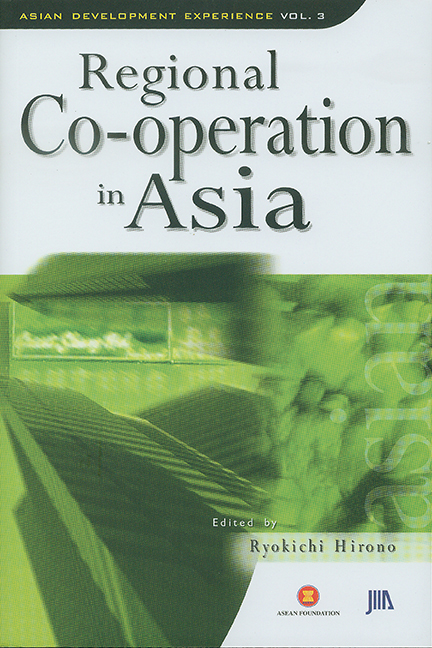Book contents
- Frontmatter
- Contents
- List of Tables
- List of Figures
- List of Contributors
- Acknowledgements
- 1 Structural Changes and Domestic Reforms in Singapore: Challenges and Implications to Regional Co-operation in ASEAN and East Asia
- 2 Asia-Japan Co-operation Toward East Asian Integration
- 3 The Impact of External Changes and Japan's Role in Industrializing Thailand
- 4 Confronting Regionalism in Asia: A View from the Philippines
- 5 Japan's Role in ASEAN-10 Under Globalization: A Japanese Perspective
- OTHER BOOKS IN THIS SERIES
5 - Japan's Role in ASEAN-10 Under Globalization: A Japanese Perspective
Published online by Cambridge University Press: 21 October 2015
- Frontmatter
- Contents
- List of Tables
- List of Figures
- List of Contributors
- Acknowledgements
- 1 Structural Changes and Domestic Reforms in Singapore: Challenges and Implications to Regional Co-operation in ASEAN and East Asia
- 2 Asia-Japan Co-operation Toward East Asian Integration
- 3 The Impact of External Changes and Japan's Role in Industrializing Thailand
- 4 Confronting Regionalism in Asia: A View from the Philippines
- 5 Japan's Role in ASEAN-10 Under Globalization: A Japanese Perspective
- OTHER BOOKS IN THIS SERIES
Summary
Introduction
During the last three decades leading up to mid-1990s, ASEAN countries have in general recorded sustained economic growth while undergoing fundamental changes in terms of per capita income, economic structure, foreign trade composition and foreign capital participation. They have also made an enormous progress in the social dimensions of development as expressed in longevity, literacy, school enrolment and poverty reduction. Political reforms have also followed these economic and social achievements, enabling in a varying degree among its member countries to move further to multi-party system, people's participation in national and community decision-making processes and smooth changes in political leadership.
Two extraordinary events have taken place since the mid-1990s. One was the enlargement of the ASEAN-6 consisting of Brunei, Indonesia, Malaysia, Philippines, Singapore and Thailand to the ASEAN-10, bringing into the family Cambodia, Laos PDR, Myanmar and the Socialist Republic of Vietnam. While these newcomers to ASEAN have contributed to the enlargement of the ASEAN market and the strengthening of the ASEAN's bargaining position vis-à-vis the rest of the world, they have also brought in a series of new problems that ASEAN has had to grapple with. These include among others the need for adjustments in intra-ASEAN trade, tariffs and investment rules, establishing mechanisms for narrowing the gap between the ASEAN-6 and the new ASEAN-4 and reformulating ASEAN's collective positions vis-à-vis the rest of the world in the light of the new ASEAN-4 having been under the socialist political regime in transition to market-oriented economies.
The other was the painful experience of the Asian Financial Crisis of 1997–98 and the consequent negative economic growth which all of a sudden the ASEAN countries had to go through, with lingering effects still felt today. It has been argued that behind the abrupt changes in the course of economic development of the ASEAN countries since the mid- 1990s lay the increasing pressures of economic globalization both promoted by the World Trade Organisation (WTO), successor to the General Agreement on Tariffs and Trade (GATT) in 1994 and assisted by International Monetary Fund (IMF) and the World Bank and the inability of these countries to adjust to the relentless challenges of globalization particularly in the financial sectors.
- Type
- Chapter
- Information
- Asian Development ExperienceRegional Co-operation in Asia, pp. 97 - 108Publisher: ISEAS–Yusof Ishak InstitutePrint publication year: 2004



